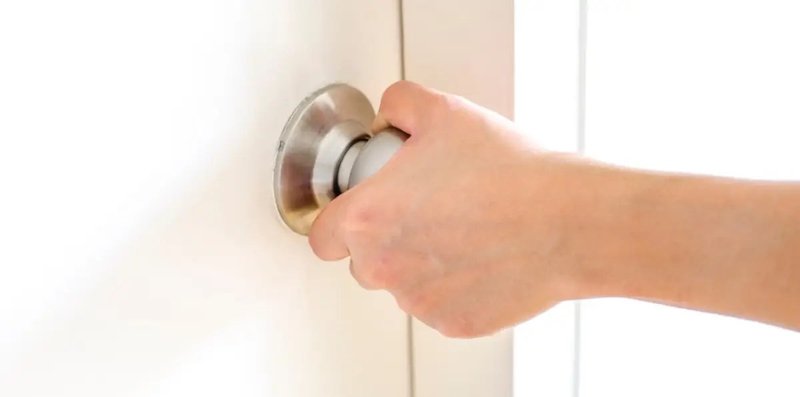
The good news is that most of the time, the fix is simple. Before you grab a can of WD-40 or start pulling out power tools, let’s explore some common reasons why your door knob might be giving you grief, and how you can troubleshoot the problem effectively.
Understanding Common Causes for a Stiff Door Knob
So, what makes a door knob hard to turn in the first place? Here are a few possibilities:
- Lack of lubrication: Just like any moving parts, door knobs need a bit of oil now and then.
- Loose screws: Over time, screws can back out, causing the knob to not turn smoothly.
- Misalignment: If the door or frame is warped, this can put extra pressure on the knob.
- Corrosion: A metal knob can rust or corrode, which can make turning it feel like a workout.
Understanding these causes can help you pinpoint the issue. Think of it as a little detective work. You’re gathering clues to solve the mystery of your stubborn door knob!
Step 1: Inspecting the Door Knob
Your first step in troubleshooting should be to inspect the knob and the surrounding hardware. Make sure you have a clear view of everything.
Here’s the thing: If your knob looks loose, that could be a big part of the problem.
Look for screws around the knob or the plate that holds it. If they’re loose, you can often fix this simply by tightening them with a screwdriver. Be careful not to overtighten—just enough to hold it snugly in place should do.
If the knob is still hard to turn after you’ve tightened the screws, don’t worry; you have more options.
Step 2: Lubrication is Key
If screws didn’t do the trick, you might need to apply some lubrication. This is often the solution for a stiff knob, and it’s a pretty straightforward fix. Here’s how to do it:
1. Choose your lubricant: WD-40 is a popular choice, but a silicone-based lubricant or even a little bit of household oil can work well too.
2. Apply the lubricant: Spray or apply a small amount directly to the mechanism of the knob.
3. Turn the knob: After applying, try turning the knob back and forth to work the lubricant into the mechanism.
You might be wondering, “How do I know if I applied enough?” A little goes a long way, but if it’s still stiff after a few tries, you can apply a bit more. Lubrication should make a noticeable difference.
Step 3: Check for Misalignment
Sometimes, the problem lies not with the knob itself but with the alignment of the door. If the door is warped or not hung properly, the knob may not turn smoothly.
Here’s how to check for misalignment:
- Close the door slowly and observe how it sits in the frame.
- Look for gaps between the door and the frame. Are they even?
If you spot gaps or if the door feels stuck in certain parts, this could be your troublemaker. You might need to adjust the hinges or, in some cases, rehang the door.
Step 4: Examine for Corrosion
If your door knob is made of metal, take a close look for any signs of corrosion. Rust can build up, making it hard to turn the knob. If you notice any discoloration or flaking paint, it’s likely time for some TLC.
To prevent this from becoming a larger issue, you can:
– Clean the knob with a gentle metal cleaner.
– Use sandpaper to gently remove surface rust, if present.
– Reapply lubricant after cleaning to protect the metal.
Taking care of corroded knobs keeps them functional and looking nice too.
Step 5: Replace the Door Knob If Necessary
If you’ve tried everything and the knob is still hard to turn, you might be looking at a replacement. Door knobs are relatively inexpensive and can be swapped out with basic tools.
1. Purchase a new knob: Look for one that fits your door type.
2. Remove the old knob: Unscrew it from the door. Make sure you keep all the pieces.
3. Install the new knob: Follow the instructions that come with your new knob. Typically, it involves fitting it into the door and securing it with screws.
Honestly, replacing a door knob isn’t as daunting as it sounds. It’s usually a quick fix and can improve your door’s functionality significantly.
Troubleshooting an interior door knob that’s hard to turn can feel like a frustrating puzzle, but with the right steps, you can typically solve it on your own. Remember, whether it’s lubrication, tightening screws, checking for misalignment, or even considering replacement, there’s often a simple solution close at hand.
By keeping an eye on functionality and maintaining your equipment, you can ensure your door knobs work smoothly for years to come. So next time you face a stubborn knob, just recall the steps we discussed. It could save you time, money, and a lot of hassle!